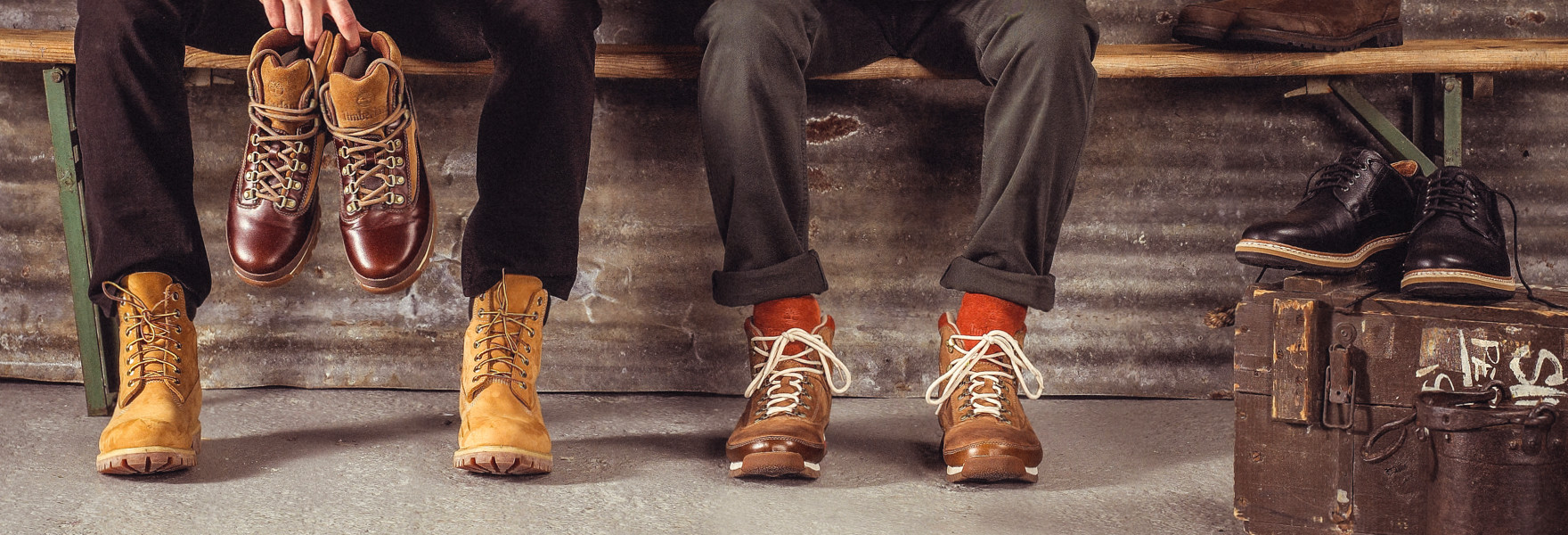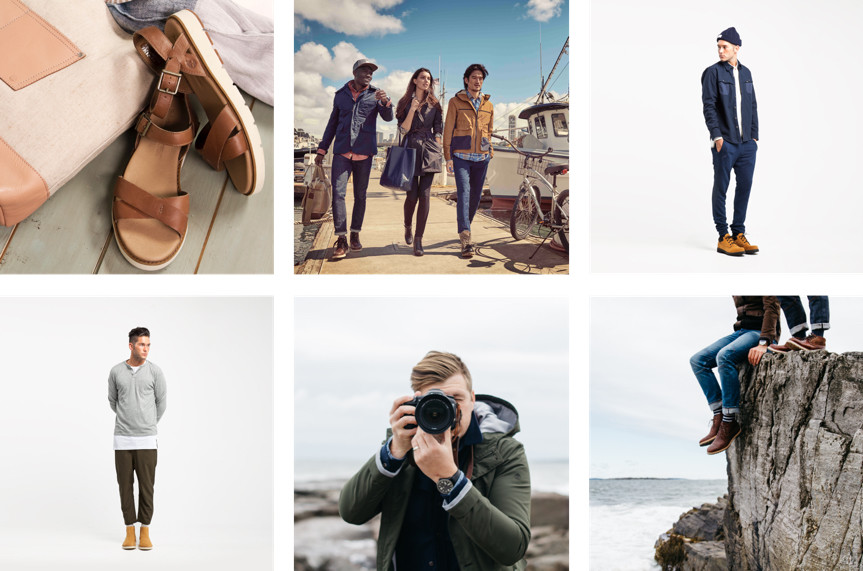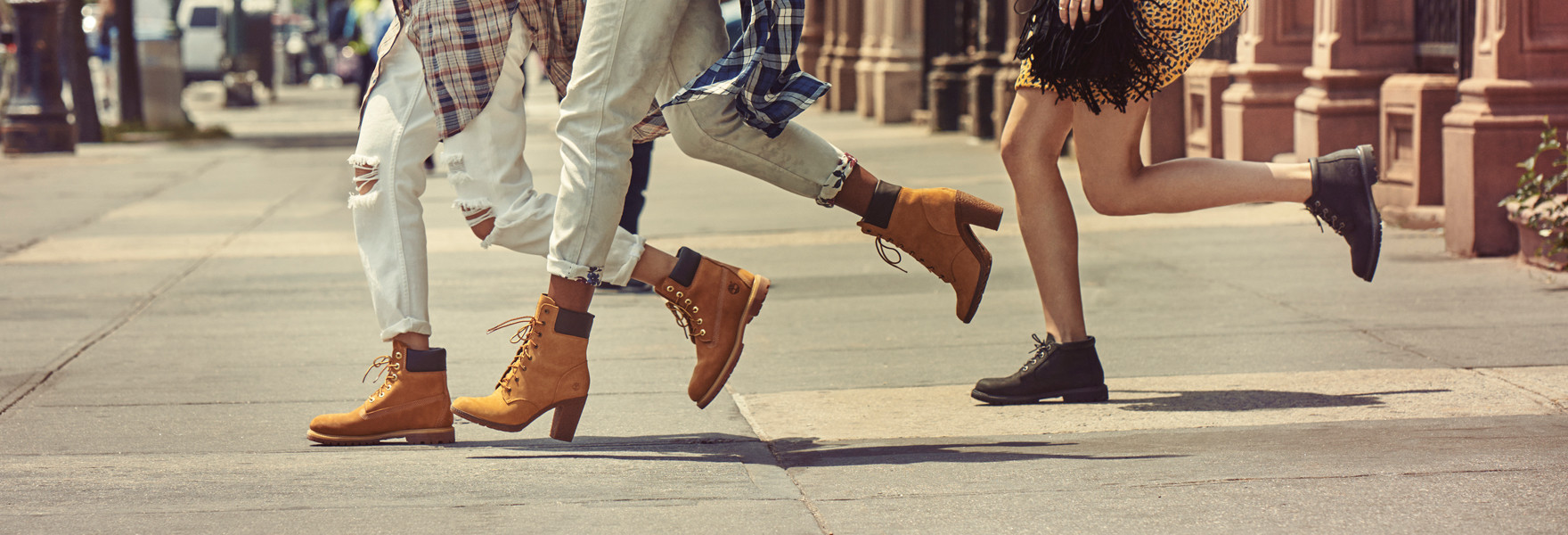“We wanted to give people a taste of this ‘modern trail’ lifestyle.”

I got my first pair of Timberland boots at sixteen years old. They were the classic, yellow work boot. My mother commented on the merits of their durability for hiking while in the store — an absurd comment in my teenage mind. These boots were going nowhere near dirty trails, I thought as I buffed the pristine toe unnecessarily.
Back then, I represented just one of Timberland’s many, diverse customer demographics — I was the it-boot wearing high-schooler. But in the years since that purchase, my customer profile has morphed. My boots have shifted their utility at various points of my life. They’ve climbed mountains, raked leaves, trudged through snow and rain, and were even revisited as a wardrobe favorite 10 years later. My “Timbs” have come a long way from the fashion accessory they were when I bought them.
You can see how this poses a unique obstacle for Timberland. The iconic boot has long been the touchstone of its brand. It stands for quality, authenticity, and heritage. It has stood the test of time — while the brand roots can be traced to 1918, the boot itself came to market in 1973 — and means so much to so many different people. But Timberland’s brand has grown beyond its staple boot. The brand has expanded globally and are selling a range of footwear, apparel, accessories — even tires — and now must balance the representations of the product the brand was built on.

“Globally, we have over 80% awareness of the brand depending on region. That’s impressive. Other brands aspire to have that. But everyone knows us for one iconic product and depending on who you are, this product means something different to you,” Jim Davey, Timberland’s VP of Marketing explained, “This product is incredible — it helps us reach so many different people, but it’s time that we use that reach to expand how people see us,”
Jim’s right about the diversity of the brand’s customers. “As a kid, you might have worn your Timberland boots hiking. Or you were remember their role in 90s hip-hop. For Europeans, you might remember it as a fashion trend. Maybe, you’re coming in early and you’re a 16-year old teen and this is the new it-boot,” he said, as I see myself falling into more than one of those categories.
So how does Timberland sell a men’s dress boot or a women’s jacket? With consumer demographics as diverse as theirs — and with a flagship product that has dictated how their customers have come to think of the brand, this is especially hard.
In 2011, Timberland was acquired by VF, and its marketing team took the opportunity to revisit who its customers were. Investing in a massive segmentation study of customers, the brand got to know its customer and redefined the pitch — and product — to them. The end result was a clear picture of the global target, dubbed “The Outdoor Lifestyler,” abbreviated around the office as OLS.
“We want to embrace our history and all those people who love our product... We’re not exclusive, we’re inclusive.”
Who is this OLS? They’re someone who loves the outdoors, but doesn’t necessarily live out in the wilderness. The OLS resides in urban areas and works a nine-to-five. Jim brought the details to life, "These are folks who have a real interest and appreciation of the outdoors but they also care about style. They want to be able to get outside more, but the reality of life keeps them from it. That means they appreciate the aspects of the product that come from the Timberland heritage — the waterproofing, the comfort, the cool factor.”
Clearly the team had spent a lot of time just trying to walk in the shoes (quite literally) of their target consumer. They had the moments of their day mapped out: they knew the puddle-jumping gait we New Yorkers adopt on the weekdays as we tackle damp streets, just as well as the more carefree weekend stroll during an upstate hike.
Then, how do you embrace the elements of the brand’s past while telling a resonant story to a consumer base as diverse as Timberland’s? “We want to embrace our history and all those people who love our product. We didn’t want to say, ‘we’re not for you. we’re only for you, over here,’ — that’s not us. We’re not exclusive, we’re inclusive.”
And thus a campaign story began to take shape within those parameters. The key insight formed around the thing that shapes most travelers’ outdoor expeditions: a trail. For the Timberland team, the meaning of a trail didn’t stop there. It was a metaphor for opportunity, a path that could enable work, play, and life — which for this generation of consumer have all merged together onto a single trail.


Strategizing the messaging was one thing, launching was another. When it comes to bringing a new idea to market you have to develop it, explain it, and get people to care about it — especially when your audience has had over 40 years to establish a single idea of who you are.
The team launched with over 500 pieces of content — user-generated content, social media, blog articles, digital video — to create a cohesive experience with the Modern Trail message. Social was the lynchpin of defining the campaign executions across all touchpoints. It helped the team define who, what, where and when of all their activations.
“We’ve got a strong sense of how to find that consumer online and be very specific and targeted. Five or ten years ago you would first go to the commerce site to check on a brand, now you go to Instagram. As a brand, a consumer will come to your feed, they might like what you are publishing, and that’s the beginning of someone getting engaged or re-engaged with the brand,” Jim explained, showing just how important their social channels are to Timberland’s marketing.
To find and grab the attention of their outdoor lifestyler, Timberland had several memorable experiences lined up. Aside from the tried-and-tested — a trending hashtag, partnerships with bloggers, fashion influencers and brand ambassadors, and good old content — they made a foray into experiential marketing to get at the heart of their target consumers’ passions. A partnership with Brooklyn Brewery became a multi-city music tour as well as a free Jamie N. Commons concert, fueled by the understanding that music — and beer — was a point of passion for their OLS target.
“We wanted to give people a taste of this modern trail lifestyle. As we thought about showing up in unexpected places and lifestyle segments ... music was a great chance for us to connect with consumers in a very unexpected way, and then we documented it to fuel more content."
For the onset of fall, Timberland went big in New York City: from free boot and bag give-aways to partnering with Uber to surprise and delight customers using Timberland branding in the app (a first for Uber) and letting customers order a ride on Timberland in branded jeeps. Because even the most outdoorsy sometimes need to hail a cab. M.
